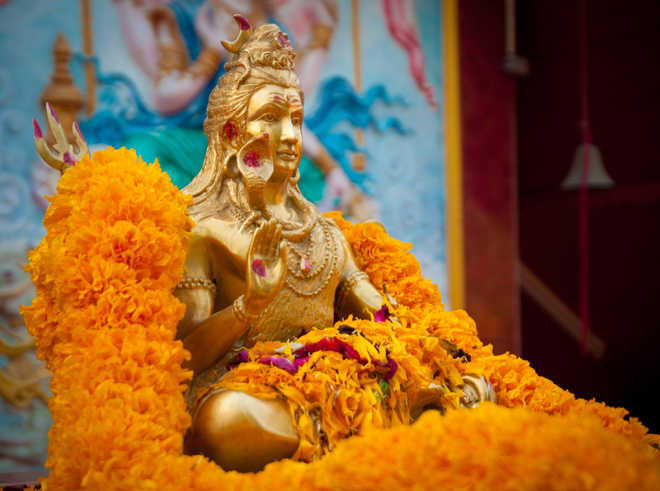Realising Shiva
Dr Satish K Kapoor
Shiva stands for the ultimate reality that is beyond time, space and form. As laws of the cosmos have been written into man, the body, mind and the soul are enveloped by energy-fields that function in an orderly manner to continue Shiva’s play in infinite time. Shivavakkiyar (10th century), the Tamil mystic-poet, says that due to ignorance, people search for god in seas and mountains, not knowing that jiva or the individual soul, is Shiva himself. The idea has a parallel in the philosophy of Paracelsus(1493-1541) who believed that life-spirit (spiritus vitae) derives from world-spirit (spiritus mundi).
Spanda – the divine throb
Spanda is biorhythm of the Universal energy that radiates everything, linking one object to another in a cosmic network of relationships. It is the pulsation of Shiva-consciousness that triggers the cosmic play of creation, preservation, destruction, and then recreation, in endless cycles. The doctrine of vibration derives from Spanda Karika, also called Spanda sutra, attributed to the 9th century sage Vasugupta of Kashmir. It deals more with manifestation of the power of consciousness than with the pedagogy of metaphysics.
Shivo’ham
Meditation on Shiva is reflection on oneself in the inner chambers of the heart. It is establishing oneself in nija-bhava, that is one’s essential and fundamental nature, with a view to connecting the finite self, enveloped by layers of ignorance, to the Infinite Being. To know Shiva is to become Shiva. Vasugupta affirms that what one thinks one becomes. If one chants Shivo’ham (‘I am Shiva’), repeatedly, the mantra goes deep into the psyche, helping one to grow in spirituality. According to Shri Tantraloka (IV.182-83), when the seeker experiences Shiva-consciousness, he visualises himself as the universe and the universe as him (ahamidam idamaham). Sakshatakara, the direct vision of Shiva, makes one self-luminous, rousing psychic abilities, like clairvoyance. Says the Panchavimsha-brahmana (XIX,1.13): ‘He who understands has wings.’
Grace, guru and shaktipat
Human soul is bound because it is oblivious of its origin and real identity which is the same as Shiva. Jnana or knowledge comes by His grace through the agency of a competent guru who can uplift one from a state of self-forgetfulness to a state of self-remembrance, from limited to unlimited awareness. Sometime, the spiritual seeker gains supreme knowledge suddenly, by the mere touch or glance of a siddha-purusha, realised soul, as during shaktipata. But this happens if one has accumulated spiritual merit by intense sadhana in this or past life.
Shiva-consciousness
The three stages in gaining Shiva-consciousness are learning, feeling and knowing. One can have supreme realisation by anavopaya, individual effort, shaktopaya, path of Shakti, or shambhavopaya, path of Shambhu that is being in Eternal Awareness of the Supreme. The last upaya, method, is simplest and the best as it does not involve any dogma but requires a strong spiritual urge to attain the supreme state. Lalla (Lal Ded, Lalleshvari), the female mystic of Kashmir (14th century), expressed it thus:
When teachings disappears, the mantra remains/ When the mantra disappears, consciouness remains/ When consciouness disappears, nothing remains/ Nothingness merges with nothingness.
Everyone should utilize his earthly sojourn to evolve his soul by integrating in him the static and the dynamic aspects of being. This is possible by deep, absorptive meditation on the divine. As one’s consciousness ascends from the lowest pole, muladhara chakra (at the base of the spine), called the seat of Shakti, to the highest pole, sahasrara chakra (at the crown of head), called the abode of Shiva, one experiences Shiva-aikya, oneness with Transcendent reality.
(Dr Kapoor is a noted educationist, historian and spiritualist)










